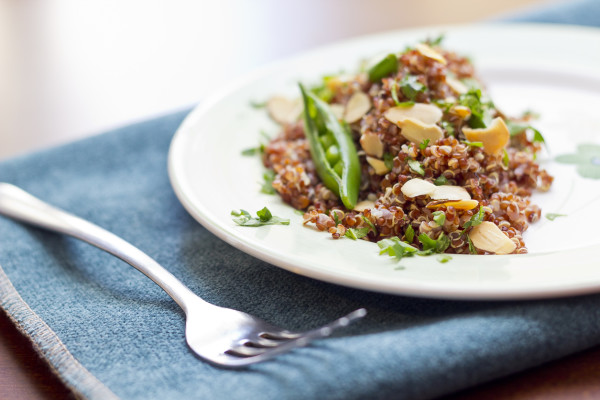Sweet and Crunchy Snap Peas Are In Season! Eat Them Like This
Oh, snap!

Crunchy, sweet, and garden staples, snap peas are summer favorites. Here’s how to make the most of snap peas season this summer.
Snap Peas Season 411
Snap peas, also called sugar snap peas, are a cross between snow peas and green peas. The hybrid variety was introduced in the late 1970s after high consumer demand for an edible pod version of snow peas. The result was a sweeter, crunchier version (with no shelling required) quickly named sugar snap peas.
Snap peas season begins early spring and lasts until about July, or until temperatures reach the mid 80s. Snap peas can easily be grown in the garden and can make any garden trellis seriously beautiful.
Snap peas can be harvested when pods start to fall of the vine, but are better picked early rather than late. If left on the vines for too long, snap pea pods and peas can become tough.
After snap peas are picked, the sugar within their pods is quickly converted into starch rendering a less sweet, and tougher pea pod. For the freshest snap peas, eat (or freeze) within a few days of picking.
At the farmers market, choose snap peas that look plump, vibrantly green, and young. The pod should be free from blemishes, marks, or wilted yellow leaves.

Health Benefits of Snap Peas
Like other green vegetables, snap peas pack in a lot of nutrition. Snap peas contain a wide array of vitamins and minerals including vitamin C, K, A, folate, riboflavin, niacin, iron, calcium, magnesium, phosphorus, and potassium. Snap peas also contain protein and healthy ALA omega-3 fatty acids.
The vitamin C content of snap peas is especially noteworthy: just one cup of snap peas contains roughly 98 percent of the daily-recommended intake of vitamin C. This vitamin is essential for repairing tissue, combating free radical damage, and aiding in the absorption of dietary iron.
Snap peas are also very good sources of dietary fiber. As a member of the legume family, the snap pea contains a hardy amount of fiber to aid in digestive regularity and to keep satiety in between meals.
Several anti-inflammatory phytonutrients are found in snap peas (and other green peas) including saponins, phenolic acids, and flavanols. These compounds exhibit antioxidant effects and are associated with lowered risk of several diseases, including diabetes and heart disease.

How to Eat Snap Peas
Peas are versatile in the kitchen, especially snap peas. Sweet and crunchy snap peas can be eaten raw or cooked.
Before preparing (or devouring) snap peas, make sure to string them. Snap peas have a long fibrous string that runs from top of the pod to the bottom that can easily be pulled out before snacking on.
Snap peas are stars when left raw. Their sweet and crisp flavor makes them perfect for salad and sandwich additions as well as a great snack on the go. They’re even better when dipped in homemade hummus or vegan ranch.
When cooked, snap peas become softer and even sweeter – which is a very good thing. They are delicious in pasta, stir-frys, or served warm with herbs alongside dinner.
Hurry! Snap peas season is quick and definitely one not to miss!
Related On Organic Authority
4 Green Spring Pea Recipes: Give Peas a Chance on Meatless Monday
Spiralized Summer Squash Recipe with Tagliatelle, Peas, and Arugula Pesto (Vegan)
More Green Peas, Please! 4 Tasty Recipes for Meatless Monday

